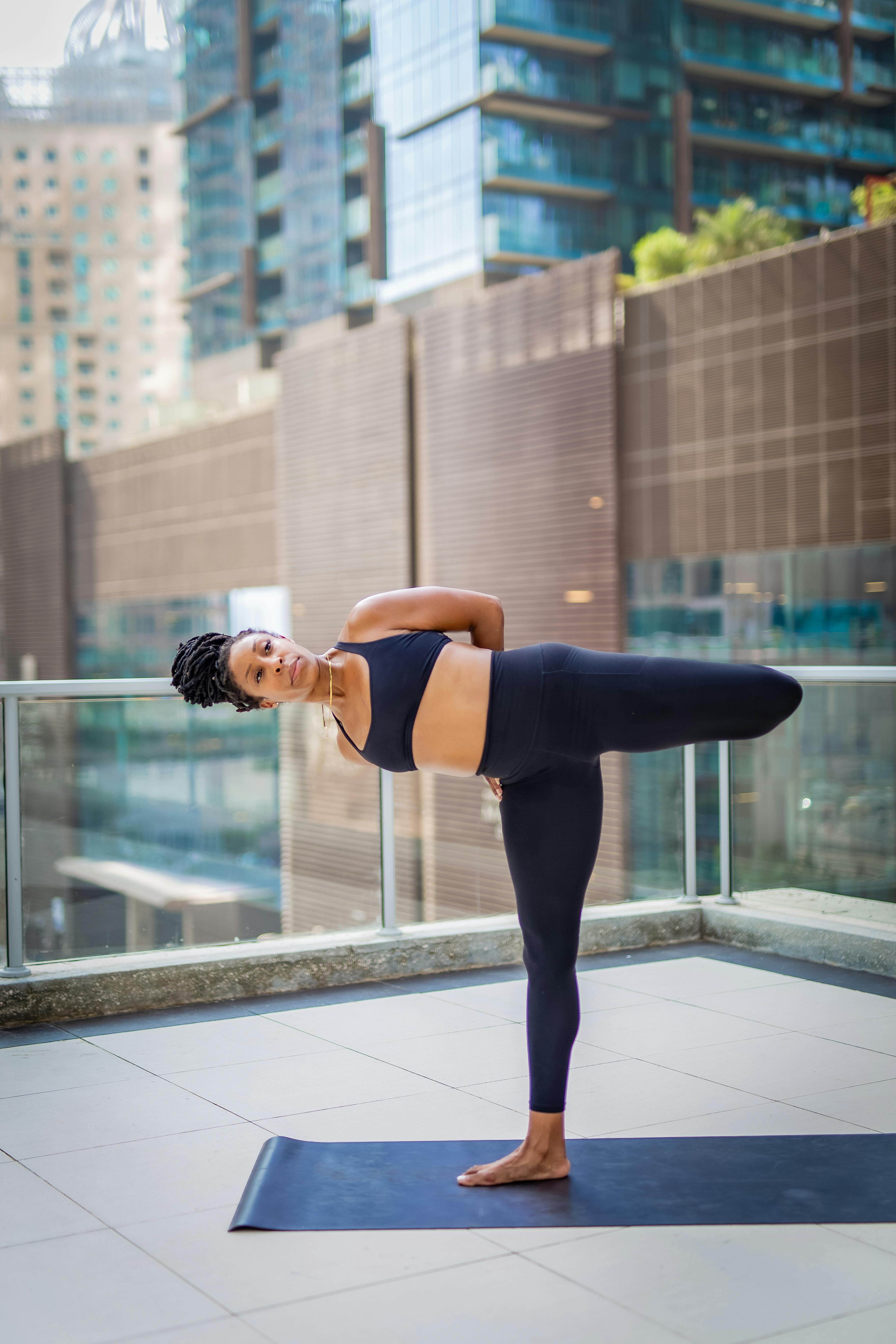When it comes to leg workouts, incorporating gym machines can be an effective way to target and strengthen specific muscle groups. In this article, I will explore the best leg gym machines that can enhance your workout routine. By examining the features, costs, and benefits of various gym machines, I aim to provide a comprehensive overview of the options available. Whether you are a beginner or a seasoned fitness enthusiast, this article will guide you in selecting the ideal leg gym machine to optimize your training and achieve your fitness goals.

Introduction
As an individual interested in maintaining a healthy and fit lifestyle, I have come to realize the importance of leg workouts in my exercise routine. Building strong and toned legs not only enhances my physical appearance but also improves my overall strength and agility. However, performing leg exercises solely through bodyweight or free weight workouts may not always be effective or feasible. This is where leg gym machines come into play. These machines provide targeted resistance and support, allowing for a more controlled and efficient leg workout. In this article, I will explore various leg gym machines, including leg press machines, hack squat machines, Smith machines, leg extension machines, seated calf raise machines, hamstring curls machines, glute machines, adductor/abductor machines, and step machines (stair climbers). I will discuss the overview, benefits, types, costs, and provide a summary of each machine to help you discover the best leg gym machines for your workout.
Leg Press Machines
Overview
Leg press machines are popular gym machines specifically designed to target and strengthen the leg muscles. They provide a stable platform for performing leg exercises, allowing users to push weight away from their bodies using their legs. These machines typically have an adjustable seat and a footplate that allows for different leg positions.
Benefits
Leg press machines offer several benefits that make them an attractive option for leg workouts. Firstly, they provide a safe and controlled environment for performing exercises, reducing the risk of injury. Additionally, they allow for a full range of motion, targeting various leg muscles, including the quadriceps, hamstrings, and glutes. Leg press machines also provide versatility as they can be used to focus on specific muscles by adjusting foot placement.
Types
There are different types of leg press machines available in gyms. The most common type is the horizontal leg press machine, where the user lies on their back and pushes the weight away using their legs. Another type is the 45-degree leg press machine, which is angled to provide a different range of motion. Vertical leg press machines are less common but provide a unique way to engage the leg muscles.
Costs
The costs of leg press machines vary depending on factors such as brand, features, and quality. On average, a leg press machine can cost anywhere from $500 to $3000 or more, depending on the specific model and brand.
Summary
In summary, leg press machines offer a safe and controlled environment for strengthening and toning leg muscles. With different types available, users can choose the one that suits their preferences and fitness goals. While the initial investment may be significant, the long-term benefits of incorporating leg press machines into a workout routine make them a worthy addition to any leg exercise regimen.

Hack Squat Machines
Overview
Hack squat machines are another popular leg exercise option found in gyms. These machines are designed to simulate the movement of a traditional barbell squat but with added stability and safety features. Users position themselves on the machine with their shoulders against a padded rest and their feet on a platform, allowing them to perform squat-like movements.
Benefits
One of the main benefits of hack squat machines is the reduction in stress on the lower back compared to traditional squats. The machine provides a guided range of motion, ensuring proper form and minimizing the risk of injury. Hack squat machines target various leg muscles, including the quadriceps, hamstrings, and glutes, making them an effective tool for overall leg development.
Types
Hack squat machines come in different variations, but the most common type is the traditional hack squat machine. This machine features a fixed vertical track and a movable platform for the feet. Other variations include the seated hack squat machine, which provides additional support through a seated position, and the plate-loaded hack squat machine, which allows for customizable weight loads.
Costs
The costs of hack squat machines can vary depending on factors such as brand, features, and quality. On average, a hack squat machine can range from $800 to $4000 or more, depending on the specific model and brand.
Summary
In summary, hack squat machines provide a safer and more controlled alternative to traditional barbell squats. With various types available, individuals can choose the machine that best suits their needs and fitness goals. Although the cost may be significant, the benefits of incorporating hack squat machines into a leg workout routine make them a valuable addition for those looking to strengthen and tone their leg muscles.
Smith Machines
Overview
Smith machines are versatile pieces of gym equipment that can be used for a variety of exercises, including leg workouts. These machines consist of a barbell fixed within steel rails, allowing for vertical movement in a guided path. Users can perform squats, lunges, and other leg exercises using a Smith machine.
Benefits
One of the main benefits of Smith machines is the added safety provided by the fixed barbell and guided range of motion. Individuals who may struggle with balance or stability during traditional squats can benefit from the stability and support provided by Smith machines. Additionally, Smith machines allow for precise weight placement and load control, making them suitable for progressive overload training.
Types
Smith machines come in different variations, but the most common type is the standard Smith machine with a fixed vertical barbell. Some Smith machines also offer angled barbells, providing variations in movement patterns and muscle engagement.
Costs
The costs of Smith machines vary depending on factors such as brand, features, and quality. On average, a Smith machine can cost anywhere from $1000 to $5000 or more, depending on the specific model and brand.
Summary
In summary, Smith machines offer a safe and controlled environment for performing leg exercises. With their versatility and various types available, individuals can choose the Smith machine that best aligns with their preferences and fitness goals. While the initial investment may be significant, the long-term benefits of incorporating Smith machines into leg workouts make them a valuable tool for leg strengthening and toning.

Leg Extension Machines
Overview
Leg extension machines are specifically designed to target the quadriceps muscles of the legs. These machines allow users to sit with their knees bent and extend their legs against resistance, engaging the quadriceps.
Benefits
Leg extension machines provide a direct and isolated workout for the quadriceps muscles. They effectively target the front of the thighs, allowing for muscle development and strengthening. Additionally, leg extension machines can help individuals recover from certain knee injuries or rehabilitate after surgery.
Types
There is typically one main type of leg extension machine found in gyms. These machines consist of a seat with a backrest and a padded roller that rests on top of the individual’s shins. The resistance can be adjusted to match the user’s strength and fitness level.
Costs
The costs of leg extension machines can vary depending on factors such as brand, features, and quality. On average, a leg extension machine can cost anywhere from $500 to $3000 or more, depending on the specific model and brand.
Summary
In summary, leg extension machines provide a targeted and isolated workout for the quadriceps muscles. With their adjustable resistance and specific design, these machines offer individuals the opportunity to enhance muscle development and strength in the front of the thighs. Considering the cost and benefits, leg extension machines can be a valuable addition to leg workouts for those seeking to focus on their quadriceps.
Seated Calf Raise Machines
Overview
Seated calf raise machines are primarily used to target the calf muscles, specifically the gastrocnemius and soleus. These machines allow users to sit and place the balls of their feet on a platform while lifting the weight using their calf muscles.
Benefits
Seated calf raise machines provide a controlled environment for targeting and strengthening the calf muscles. They isolate the calves, allowing for focused muscle development and growth. Additionally, these machines can help improve ankle stability and flexibility.
Types
The most common type of calf raise machine is the seated calf raise machine. This machine features a seat, foot platform, and weight stack, allowing users to adjust the resistance according to their strength and fitness level.
Costs
The costs of seated calf raise machines can vary depending on factors such as brand, features, and quality. On average, a seated calf raise machine can cost anywhere from $500 to $2000 or more, depending on the specific model and brand.
Summary
In summary, seated calf raise machines offer a controlled and effective way to target the calf muscles. With their ability to isolate the calves and adjustable resistance, these machines allow for focused muscle development and growth. Considering the cost and benefits, incorporating seated calf raise machines into a leg workout routine can be beneficial for individuals looking to strengthen and tone their calf muscles.
Hamstring Curls Machines
Overview
Hamstring curls machines are specifically designed to target the hamstring muscles at the back of the thighs. These machines allow users to lie face down, secure their legs under padded rollers, and curl their legs up against resistance.
Benefits
Hamstring curls machines provide a direct and isolated workout for the hamstring muscles. They effectively target the back of the thighs, allowing for muscle development and strengthening. Additionally, hamstring curls machines can help individuals improve hamstring flexibility and reduce the risk of certain injuries.
Types
There is typically one main type of hamstring curls machine found in gyms. These machines consist of a seat and a padded roller that individuals place their legs under. The resistance can be adjusted to match the user’s strength and fitness level.
Costs
The costs of hamstring curls machines can vary depending on factors such as brand, features, and quality. On average, a hamstring curls machine can cost anywhere from $500 to $3000 or more, depending on the specific model and brand.
Summary
In summary, hamstring curls machines provide a targeted and isolated workout for the hamstring muscles. With their adjustable resistance and specific design, these machines offer individuals the opportunity to enhance muscle development and strength in the back of the thighs. Considering the cost and benefits, hamstring curls machines can be a valuable addition to leg workouts for those seeking to focus on their hamstrings.
Glute Machines
Overview
Glute machines, also known as hip thrust machines, are specifically designed to target the glute muscles. These machines allow users to position themselves with their upper back against a padded rest and their feet on a platform, performing hip thrust-like movements.
Benefits
Glute machines provide a controlled and effective way to target and strengthen the glutes. They isolate the glute muscles, allowing for focused muscle development and growth. Additionally, these machines can help improve hip stability and enhance overall lower body strength.
Types
The most common type of glute machine is the hip thrust machine. This machine features a padded rest for the upper back and a foot platform for performing hip thrust movements. Some machines also offer adjustable positions and resistance to target different parts of the glute muscles.
Costs
The costs of glute machines can vary depending on factors such as brand, features, and quality. On average, a glute machine can cost anywhere from $500 to $3000 or more, depending on the specific model and brand.
Summary
In summary, glute machines offer a controlled and efficient way to target the glute muscles. With their ability to isolate the glutes and adjustable resistance, these machines allow for focused muscle development and growth. Incorporating glute machines into a leg workout routine can be beneficial for individuals looking to strengthen and tone their glutes, improve hip stability, and enhance overall lower body strength.
Adductor/Abductor Machines
Overview
Adductor/abductor machines, also known as inner thigh/outer thigh machines, are designed to target the muscles of the inner and outer thighs. These machines allow users to sit and position their legs against padded supports, pushing against resistance to engage and strengthen the targeted muscles.
Benefits
Adductor/abductor machines provide a controlled and isolated workout for the muscles of the inner and outer thighs. They effectively target these specific muscles, allowing for muscle development and strengthening. Additionally, these machines can help individuals improve hip mobility and stability.
Types
The most common type of adductor/abductor machine is a single machine that allows users to adjust the position of their legs for inner thigh or outer thigh exercises. Some machines offer a combination of both exercises in one unit.
Costs
The costs of adductor/abductor machines can vary depending on factors such as brand, features, and quality. On average, an adductor/abductor machine can cost anywhere from $500 to $2000 or more, depending on the specific model and brand.
Summary
In summary, adductor/abductor machines offer a controlled and efficient way to target the muscles of the inner and outer thighs. With their ability to isolate these muscles and adjustable resistance, these machines allow for focused muscle development and strengthening. Incorporating adductor/abductor machines into a leg workout routine can be beneficial for individuals looking to target their inner and outer thighs, improve hip mobility, and enhance overall lower body strength.
Step Machines (Stair Climbers)
Overview
Step machines, also known as stair climbers, are cardiovascular machines that simulate the motion of climbing stairs. These machines provide a low-impact workout while engaging various leg muscles, including the quadriceps, hamstrings, and calves.
Benefits
Step machines offer a challenging cardiovascular workout while simultaneously targeting and strengthening leg muscles. They help improve cardiovascular endurance, burn calories, and tone the lower body. Step machines also provide a low-impact option for individuals with joint issues or those recovering from certain injuries.
Types
Step machines come in various forms, including traditional step machines with adjustable resistance, step mills that mimic the movement of an escalator, and mini stepper machines that are compact and portable.
Costs
The costs of step machines can vary depending on factors such as brand, features, and quality. On average, a step machine can cost anywhere from $500 to $4000 or more, depending on the specific model and brand.
Summary
In summary, step machines provide a challenging cardiovascular workout while engaging key leg muscles. With their ability to improve cardiovascular endurance, burn calories, and strengthen the lower body, step machines are a valuable addition to a leg workout routine. Considering the various types available and the range of costs, individuals can choose the step machine that best suits their fitness goals and preferences.
In conclusion, leg gym machines offer a range of benefits and options for individuals seeking to strengthen and tone their leg muscles. Leg press machines, hack squat machines, Smith machines, leg extension machines, seated calf raise machines, hamstring curls machines, glute machines, adductor/abductor machines, and step machines (stair climbers) provide targeted resistance and support, allowing for controlled and efficient leg workouts. While the initial investment may be significant, the long-term benefits of incorporating these machines into a leg exercise routine make them valuable tools for enhancing overall leg strength and fitness. With an understanding of their overview, benefits, types, costs, and summaries, individuals can confidently choose the best leg gym machines to optimize their workouts and achieve their fitness goals.

